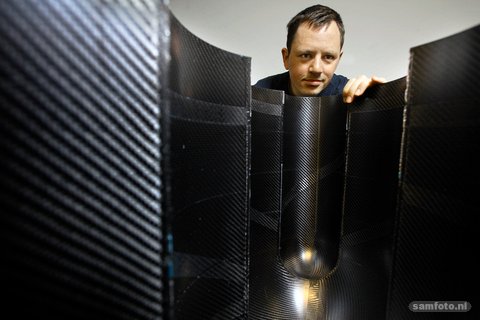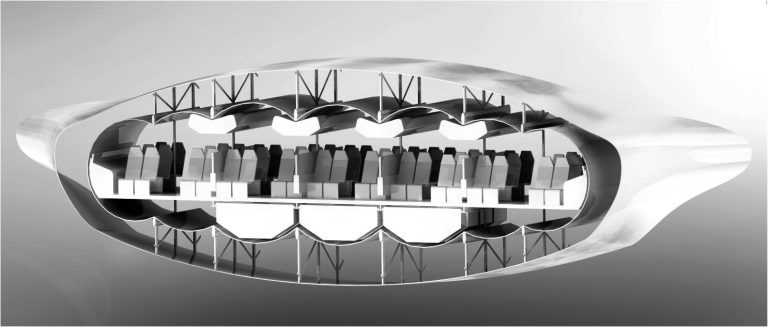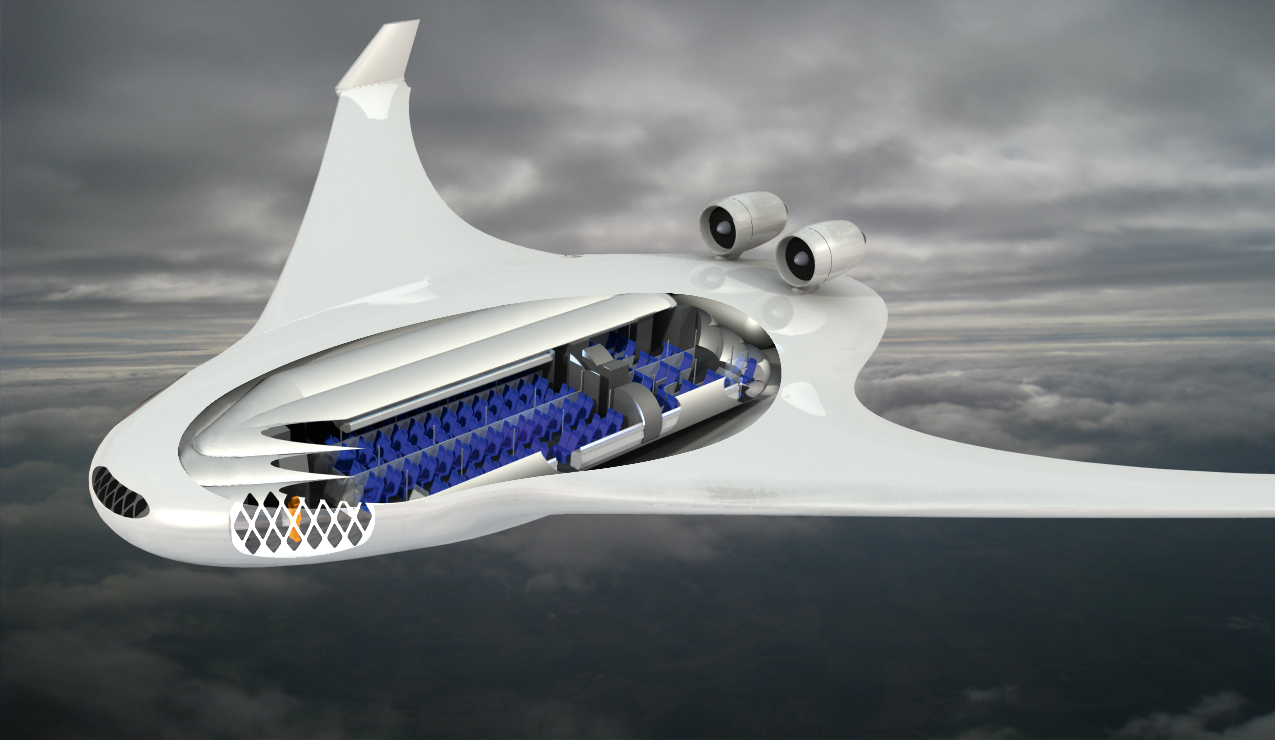Inflate any form and it will naturally tend toward a sphere. Unless it is one of Francois Geuskens’ pressure vessels, which come in essentially all shapes imaginable.
The low-tech versions of the stuff that Francois Geuskens has been studying are inflatable air matresses (mostly composed of parallel cylinders) or bouncy castles. But the technology involved in these doesn’t qualify for aerospace engineering.
The start of Geuskens’ PhD project stems from the 2007 Cleanera programme, which aimed to develop ecofriendly air travel. Part of the programme was a revolutionary aircraft design in which fuselage and wings blended into one morphed shape. Fine, but how to cope with pressurising such a structure? Without special measures, the whole thing would blow up like a frog at the end of a straw.


tanks
Wrapping up his research project, Geuskens thinks the free-form pressure vessel technology he developed, is most likely to be used in light-weight (cryogenic) gas tanks for storing LPG or liquid hydrogen or oxygen. Another interesting application could be inflatable wings for small aircraft. The present forms are mostly limited to a row of pressurised cylinders with varying diameters. Geuskens’ analysis offers design alternatives.
The analysis described in his thesis Conformable Pressurized Structures allows any combination of spheres, cylinders, ellipsoids or conusses to be joined to fill space of any form and maintain its shape under pressure.
A flat LPG tank would be a good illustration and a nice alternative to the bulky cylinder that often occupies half of a car’s boot. But alas, in practice the construction of a tank from a flat array of spheres will turn out to be too expensive because of all the necessary intermediate walls or pillars at the numerous intersections between the spheres. For an idea of the intermediate walls, take a good look at a heap of soap bubbles and notice the dividing walls between the segments.
Geuskens has proven that the forces and tensions in any constellation of such rotation-symmetric forms can easily be derived from the pressure, the areas involved and the lengths of the shell elements. “Calculation is made easy”, he remarks, “but proving it can be, was a tough nut to crack.”


pressure cabin
The technology may be too expensive for cars, but free-form fuel tanks for aerospace might be another matter. Here the weight reduction that Geuskens’ technology allows for may outweigh the extra construction costs. And if ever non-cylindrical airships are designed, this is the theory they’ll use for constructing the pressure cabin.
–> Francois Geuskens: Conformable Pressurized Structures, PhD supervisors: Professor Adriaan Beukers and Dr Sortiris Koussios, 2 November 09:30, Auditorium.



Comments are closed.